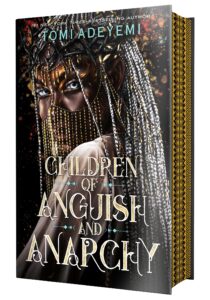
Can You Have the Hero Without the Journey?
A hero leaves home, finds some friends and a mentor, and goes on an adventure to find some cherished object — which book came into your mind just then? It could be any number of them because what I am actually describing here is part of the story structure known as the hero’s journey.
The hero’s journey, also called the monomyth, was first described by writer and academic Joseph Campbell in his 1949 book The Hero with a Thousand Faces. George Lucas credited this book with influencing the first Star Wars saga. Stories, from The Lord of the Rings to, (arguably) Jane Eyre, follow the path of the hero’s journey
Campbell believed that all stories could be placed into this structure. Later scholars agree that this theory did not take into account many non-European story structures and that it also cited only stories that fit within the determined structure.
The hero’s journey Campbell cites classically has seventeen stages and can be broken up into three acts, which are referred to as the departure, the initiation, and the return. Within these acts are familiar moments like the “call to adventure” and the “refusal of the call.” The hero must cross the threshold into an “unknown or special world” to eventually reach the “innermost cave,” or the climax of their adventure. There is a reward, or “elixir,” once their enemy has been defeated. The hero will then return to the ordinary world with their reward, transformed by the adventure. This structure can be clearly seen in many works of high fantasy, but it’s also present in other works of fiction.
What are some alternatives to the hero’s journey structure?
While different genres have specific beats that are hit to make the stories what they are, some of the fun in creative writing is in breaking the rules. The Fichtean Curve is probably the most basic story structure and the one you were most likely taught in school — its three-part structure consists of rising action, a climax, and falling action.
Romance novels tend to follow a three-act structure in which the beginning quarter introduces the characters and brings them together in an inciting incident. The middle will be half of the book and contain some test for the romantic pair and their relationship. The last quarter includes the crisis/climax/resolution, since a happily ever after (or happily for now) is an integral part of the genre. Mysteries also often hit certain beats — there’s the setup, discovery, funnel, and the reveal, with the middle two taking up 80% of the story. That’s not to say that some mysteries don’t follow this format to the letter. However, you probably can’t call your book a mystery if there isn’t at least some investigation and resolution.
Maureen Murdock’s The Heroine’s Journey (which was written as a self-help book) argues that the hero’s journey does not work for women. The Heroine’s journey begins with a rejection of feminine ideals and a move towards patriarchal values. The heroine will then experience a spiritual death and will turn inward to reclaim her own power. The ending will contain a union of both the masculine and the feminine. Other versions of this story require that the heroine prove herself to herself. This pattern can be seen in Tamora Pierce’s The Song of the Lioness, which can also be put into the hero’s journey framework. Pierce’s book also contains a supernatural event that is actually called “The Ordeal of Knighthood.”
Then there’s In medias res (Latin for “in the middle of things”), which drops you right into the action with an explanation of what, precisely, is going on and tells you why later in the story. One frequently cited example of this technique is The Iliad, but one could also look at something like Celeste Ng’s Little Fires Everywhere, in which the titular fire has begun and the reader will learn why later.
There are also novels that follow a flat or static arc in which the character(s) do not change or transform. The protagonist in My Year of Rest and Relaxation by Ottessa Moshfegh comes to mind, since she is very much the same person on the last page as she is on the first.
Meanwhile, in Japan, Kishōtenketsu is a popular storytelling format that consists of the introduction, development, twist, and conclusion — the twist is where conflict would be in Western-style storytelling, and takes the story in a different direction. Convenience Store Woman by Sayaka Murata is one such story.
Oral traditions contain their own storytellers who use their own structures, like the Arab hakawati — or stories within stories, as in 1001 Nights — and the West African griot. The latter incorporates jokes and songs into folktales, which include stories about figures like Anansi the trickster.
What about the villain’s journey?
You can explore the inverse of a hero’s journey and create a kind of villain’s journey. This is a descending character arc in which a character’s flaws are exploited and amplified over the course of a story. Jonathan Abernathy, You Are Kind by Molly McGhee features a character who means well but becomes a tool of a system he knows that he really should be fighting against. His desire to be what is a pretty rigid definition of a successful person drives him to do things that he knows are wrong.
There are as many ways to tell a story as there are to be a hero — and that is just one reason why experiencing stories across cultures and genres is so much fun.
Also In This Story Stream
- The Most Iconic Heroes in Manga
- 9 Heroes From Around the World
- The Best Heroes in YA Fantasy
- Books Where The Villain Is Actually The Hero
- Best Underrated Superheroes in Comics
- Not All Heroes Wear Capes: 9 Books About Ordinary and Everyday Heroes
- Take This Queero Quiz to Find Out Which Queer Superhero You Are
- Superheroes Who Are Literally Gods
- BIPOC Final Girls in Recent Horror Fic












